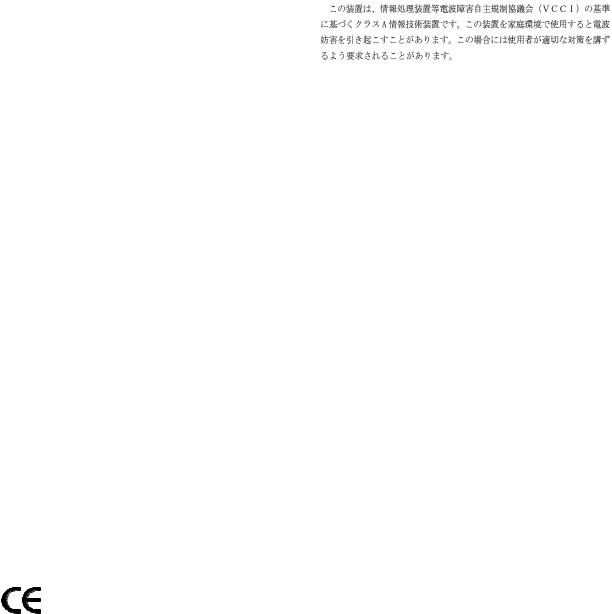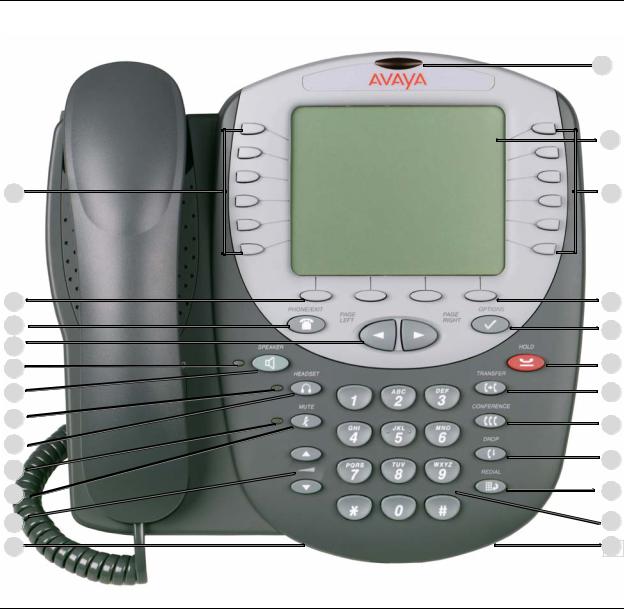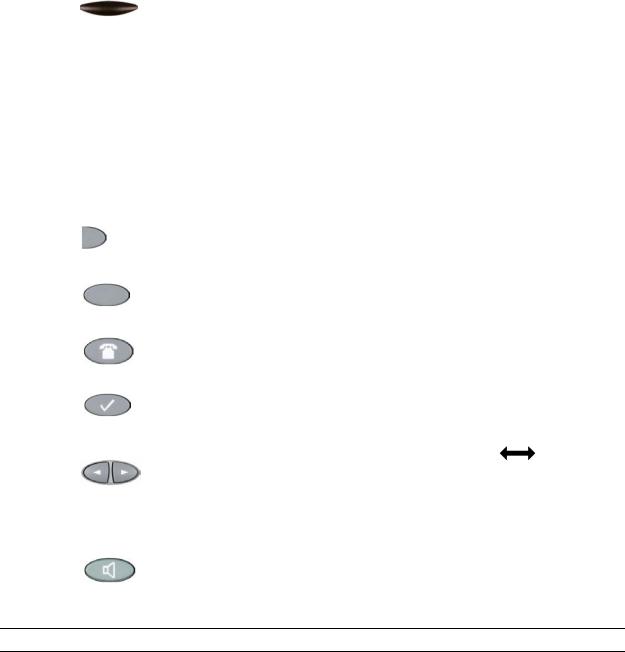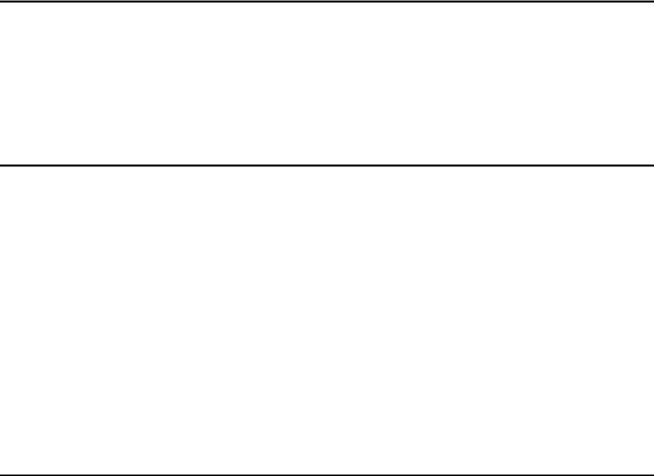Avaya 4621SW IP User Manual

4620/4620SW/4621SW IP Telephone
Release 2.2
User Guide
555-233-781 Issue 2.2 April 2005

Copyright 2005, Avaya Inc.
All Rights Reserved
Notice
Every effort was made to ensure that the information in this document was complete and accurate at the time of printing. However, information is subject to change.
Warranty
Avaya Inc. provides a limited warranty on this product. Refer to your sales agreement to establish the terms of the limited warranty. In addition, Avaya’s standard warranty language as well as information regarding support for this product, while under warranty, is available through the following Web site: http://www.avaya.com/support.
Preventing Toll Fraud
“Toll fraud” is the unauthorized use of your telecommunications system by an unauthorized party (for example, a person who is not a corporate employee, agent, subcontractor, or is not working on your company's behalf). Be aware that there may be a risk of toll fraud associated with your system and that, if toll fraud occurs, it can result in substantial additional charges for your telecommunications services.
Avaya Fraud Intervention
If you suspect that you are being victimized by toll fraud and you need technical assistance or support, in the United States and Canada, call the Technical Service Center's Toll Fraud Intervention Hotline at 1-800-643-2353.
Disclaimer
Avaya is not responsible for any modifications, additions or deletions to the original published version of this documentation unless such modifications, additions or deletions were performed by Avaya. Customer and/or End User agree to indemnify and hold harmless Avaya, Avaya's agents, servants and employees against all claims, lawsuits, demands and judgments arising out of, or in connection with, subsequent modifications, additions or deletions to this documentation to the extent made by the Customer or End User.
How to Get Help
For additional support telephone numbers, go to the Avaya support Web site: http://www.avaya.com/support. If you are:
•Within the United States, click the Escalation Contacts link that is located under the Support Tools heading. Then click the appropriate link for the type of support that you need.
•Outside the United States, click the Escalation Contacts link that is located under the Support Tools heading. Then click the International Services link that includes telephone numbers for the international Centers of Excellence.
Providing Telecommunications Security
Telecommunications security (of voice, data, and/or video communications) is the prevention of any type of intrusion to (that is, either unauthorized or malicious access to or use of) your company's telecommunications equipment by some party.
Your company's “telecommunications equipment” includes both this Avaya product and any other voice/data/video equipment that could be accessed via this Avaya product (that is, “networked equipment”).
An “outside party” is anyone who is not a corporate employee, agent, subcontractor, or is not working on your company's behalf. Whereas, a “malicious party” is anyone (including someone who may be otherwise authorized) who accesses your telecommunications equipment with either malicious or mischievous intent.
Such intrusions may be either to/through synchronous (time-multiplexed and/or circuit-based) or asynchronous (character-, message-, or packet-based) equipment or interfaces for reasons of:
•Utilization (of capabilities special to the accessed equipment)
•Theft (such as, of intellectual property, financial assets, or toll facility access)
•Eavesdropping (privacy invasions to humans)
•Mischief (troubling, but apparently innocuous, tampering)
•Harm (such as harmful tampering, data loss or alteration, regardless of motive or intent)
Be aware that there may be a risk of unauthorized intrusions associated with your system and/or its networked equipment. Also realize that, if such an intrusion should occur, it could result in a variety of losses to your company (including but not limited to, human/data privacy, intellectual property, material assets, financial resources, labor costs, and/or legal costs).
Responsibility for Your Company’s Telecommunications Security
The final responsibility for securing both this system and its networked equipment rests with you - Avaya’s customer system administrator, your telecommunications peers, and your managers. Base the fulfillment of your responsibility on acquired knowledge and resources from a variety of sources including but not limited to:
•Installation documents
•System administration documents
•Security documents
•Hardware-/software-based security tools
•Shared information between you and your peers
•Telecommunications security experts
To prevent intrusions to your telecommunications equipment, you and your peers should carefully program and configure:
•Your Avaya-provided telecommunications systems and their interfaces
•Your Avaya-provided software applications, as well as their underlying hardware/software platforms and interfaces
•Any other equipment networked to your Avaya products
TCP/IP Facilities
Customers may experience differences in product performance, reliability and security depending upon network configurations/design and topologies, even when the product performs as warranted.
Standards Compliance
Avaya Inc. is not responsible for any radio or television interference caused by unauthorized modifications of this equipment or the substitution or attachment of connecting cables and equipment other than those specified by Avaya Inc. The correction of interference caused by such unauthorized modifications, substitution or attachment will be the responsibility of the user. Pursuant to Part 15 of the Federal Communications Commission (FCC) Rules, the user is cautioned that changes or modifications not expressly approved by Avaya Inc. could void the user’s authority to operate this equipment.
Product Safety Standards
This product complies with and conforms to the following international Product Safety standards as applicable:
Safety of Information Technology Equipment, IEC 60950, 3rd Edition, or IEC 60950-1, 1st Edition, including all relevant national deviations as listed in Compliance with IEC for Electrical Equipment (IECEE) CB-96A.
Safety of Information Technology Equipment, CAN/CSA-C22.2 No. 60950-00 / UL 60950, 3rd Edition, or CAN/CSA-C22.2 No. 60950-1-03 / UL 60950-1.
Safety Requirements for Information Technology Equipment, AS/NZS 60950:2000.
One or more of the following Mexican national standards, as applicable: NOM 001 SCFI 1993, NOM SCFI 016 1993, NOM 019 SCFI 1998
Electromagnetic Compatibility (EMC) Standards
This product complies with and conforms to the following international EMC standards and all relevant national deviations:
Limits and Methods of Measurement of Radio Interference of Information Technology Equipment, CISPR 22:1997, EN55022:1998, and AS/NZS 3548.
Information Technology Equipment – Immunity Characteristics – Limits and Methods of Measurement, CISPR 24:1997 and EN55024:1998, including:
•Electrostatic Discharge (ESD) IEC 61000-4-2
•Radiated Immunity IEC 61000-4-3
•Electrical Fast Transient IEC 61000-4-4
•Lightning Effects IEC 61000-4-5
•Conducted Immunity IEC 61000-4-6
Federal Communications Commission Statement
Part 15:
Note: This equipment has been tested and found to comply with the limits for a Class B digital device, pursuant to Part 15 of the FCC Rules. These limits are designed to provide reasonable protection against harmful interference when the equipment is operated in a commercial environment. This equipment generates, uses, and can radiate radio frequency energy and, if not installed and used in accordance with the instruction manual, may cause harmful interference to radio communications. Operation of this equipment in a residential area is likely to cause harmful interference in which case the user will be required to correct the interference at his own expense.

Part 68: Answer-Supervision Signaling
Allowing this equipment to be operated in a manner that does not provide proper answer-supervision signaling is in violation of Part 68 rules. This equipment returns answer-supervision signals to the public switched network when:
•answered by the called station,
•answered by the attendant, or
•routed to a recorded announcement that can be administered by the customer premises equipment (CPE) user.
This equipment returns answer-supervision signals on all direct inward dialed (DID) calls forwarded back to the public switched telephone network. Permissible exceptions are:
•A call is unanswered.
•A busy tone is received.
•A reorder tone is received.
Avaya attests that this registered equipment is capable of providing users access to interstate providers of operator services through the use of access codes. Modification of this equipment by call aggregators to block access dialing codes is a violation of the Telephone Operator Consumers Act of 1990.
Means of Connection
Connection of this equipment to the telephone network is shown in the following tables.
Canadian Department of Communications (DOC) Interference Information
This Class B digital apparatus complies with Canadian ICES-003.
Cet appareil numérique de la classe B est conforme à la norme NMB-003 du Canada.
This equipment meets the applicable Industry Canada Terminal Equipment Technical Specifications. This is confirmed by the registration number. The abbreviation, IC, before the registration number signifies that registration was performed based on a Declaration of Conformity indicating that Industry Canada technical specifications were met. It does not imply that Industry Canada approved the equipment.
Declarations of Conformity
United States FCC Part 68 Supplier’s Declaration of Conformity (SDoC)
Avaya Inc. in the United States of America hereby certifies that the equipment described in this document and bearing a TIA TSB-168 label identification number complies with the FCC’s Rules and Regulations 47 CFR Part 68, and the Administrative Council on Terminal Attachments (ACTA) adopted technical criteria.
Avaya further asserts that Avaya handset-equipped terminal equipment described in this document complies with Paragraph 68.316 of the FCC Rules and Regulations defining Hearing Aid Compatibility and is deemed compatible with hearing aids.
Copies of SDoCs signed by the Responsible Party in the U. S. can be obtained by contacting your local sales representative and are available on the following Web site: http://www.avaya.com/support.
All Avaya media servers and media gateways are compliant with FCC Part 68, but many have been registered with the FCC before the SDoC process was available. A list of all Avaya registered products may be found at: http://www.part68.org by conducting a search using “Avaya” as manufacturer.
European Union Declarations of Conformity
Avaya Inc. declares that the equipment specified in this document bearing the “CE”Conformité( Europeénne ) mark conforms to the European Union Radio and Telecommunications Terminal Equipment Directive (1999/5/EC), including the Electromagnetic Compatibility Directive (89/336/EEC) and Low Voltage Directive (73/23/EEC). This equipment has been certified to meet CTR3 Basic Rate Interface (BRI) and CTR4 Primary Rate Interface (PRI) and subsets thereof in CTR12 and CTR13, as applicable.
Copies of these Declarations of Conformity (DoCs) can be obtained by contacting your local sales representative and are available on the following Web site: http://www.avaya.com/support.
Japan
This is a Class B product based on the standard of the Voluntary Control Council for Interference by Information Technology Equipment (VCCI). If this equipment is used in a domestic environment, radio disturbance may occur, in which case, the user may be required to take corrective actions.
To order copies of this and other documents:
Call: Avaya Publications Center
Voice 1.800.457.1235 or 1.207.866.6701 FAX 1.800.457.1764 or 1.207.626.7269
Write: Globalware Solutions 200 Ward Hill Avenue Haverhill, MA 01835 USA
Attention: Avaya Account Management E-mail: totalware@gwsmail.com
For the most current versions of documentation, go to the Avaya support Web site: http://www.avaya.com/support.
Contents
About This Guide . . . . . . . . . . . . . . . . . . . . . . . . . . . . . . |
9 |
Overview . . . . . . . . . . . . . . . . . . . . . . . . . . . . . . . . . . . . . . . . |
9 |
Intended Audience. . . . . . . . . . . . . . . . . . . . . . . . . . . . . . . . . . . |
9 |
Issue Date . . . . . . . . . . . . . . . . . . . . . . . . . . . . . . . . . . . . . . . |
9 |
What’s New in This Document . . . . . . . . . . . . . . . . . . . . . . . . . . . . |
10 |
How to Use This Document . . . . . . . . . . . . . . . . . . . . . . . . . . . . . . |
10 |
Document Organization . . . . . . . . . . . . . . . . . . . . . . . . . . . . . . . . |
11 |
Conventions Used . . . . . . . . . . . . . . . . . . . . . . . . . . . . . . . . . |
11 |
Symbolic Conventions . . . . . . . . . . . . . . . . . . . . . . . . . . . . . . |
12 |
Typographic Conventions. . . . . . . . . . . . . . . . . . . . . . . . . . . . . |
12 |
Related Documentation . . . . . . . . . . . . . . . . . . . . . . . . . . . . . . . . |
12 |
Chapter 1: Introducing Your 4620/4620SW/4621SW IP Telephone . . . . |
13 |
Introduction . . . . . . . . . . . . . . . . . . . . . . . . . . . . . . . . . . . . . . |
13 |
The 4620/4620SW/4621SW IP Telephone . . . . . . . . . . . . . . . . . . . . . . . |
14 |
About the Feature Key Expansion Unit (EU24/EU24BL) . . . . . . . . . . . . . . |
18 |
Navigating Application Screens . . . . . . . . . . . . . . . . . . . . . . . . . . . |
18 |
4620/4620SW/4621SW IP Telephone Applications. . . . . . . . . . . . . . . . . . |
20 |
Phone Application . . . . . . . . . . . . . . . . . . . . . . . . . . . . . . . . . |
20 |
Speed Dial Application . . . . . . . . . . . . . . . . . . . . . . . . . . . . . . |
20 |
Call Log Application . . . . . . . . . . . . . . . . . . . . . . . . . . . . . . . . |
21 |
Web Access Application (Optional) . . . . . . . . . . . . . . . . . . . . . . . |
21 |
4620/4620SW/4621SW Telephone Options . . . . . . . . . . . . . . . . . . . . |
21 |
Additional 4620/4620SW/4621SW Functionality . . . . . . . . . . . . . . . . . . . |
22 |
Push Feature . . . . . . . . . . . . . . . . . . . . . . . . . . . . . . . . . . . . |
22 |
Automatic Backup/Retrieval Feature . . . . . . . . . . . . . . . . . . . . . . . |
22 |
Chapter 2: Using Your 4620/4620SW/4621SW IP Telephone . . . . . . . |
23 |
Introduction . . . . . . . . . . . . . . . . . . . . . . . . . . . . . . . . . . . . . . |
23 |
Call Appearances . . . . . . . . . . . . . . . . . . . . . . . . . . . . . . . . . . . |
23 |
Making Calls . . . . . . . . . . . . . . . . . . . . . . . . . . . . . . . . . . . . . . |
23 |
Manual Dialing . . . . . . . . . . . . . . . . . . . . . . . . . . . . . . . . . . . |
24 |
Automatic Dialing . . . . . . . . . . . . . . . . . . . . . . . . . . . . . . . . . |
24 |
Redialing a party . . . . . . . . . . . . . . . . . . . . . . . . . . . . . . . . |
25 |
Dialing a party using a Speed Dial button . . . . . . . . . . . . . . . . . . |
26 |
Automatically dialing a party using an administered Line/Feature button |
26 |
Calling a party from the Call Log . . . . . . . . . . . . . . . . . . . . . . . |
27 |
Calling a party from the Web Access application . . . . . . . . . . . . . . |
28 |
Issue 2.2 April 2005 5
Contents |
|
Receiving Calls . . . . . . . . . . . . . . . . . . . . . . . . . . . . . . . . . . . . |
28 |
Call Handling Features . . . . . . . . . . . . . . . . . . . . . . . . . . . . . . . . |
28 |
Conference . . . . . . . . . . . . . . . . . . . . . . . . . . . . . . . . . . . . . |
29 |
Hold . . . . . . . . . . . . . . . . . . . . . . . . . . . . . . . . . . . . . . . . . |
29 |
Mute. . . . . . . . . . . . . . . . . . . . . . . . . . . . . . . . . . . . . . . . . |
30 |
Speaker . . . . . . . . . . . . . . . . . . . . . . . . . . . . . . . . . . . . . . . |
30 |
Changing from the Speaker to the handset or headset . . . . . . . . . . . |
31 |
Changing from the handset or headset to the Speaker . . . . . . . . . . . |
31 |
Turning the Speaker on during a call. . . . . . . . . . . . . . . . . . . . . |
31 |
Turning the Speaker off during a call. . . . . . . . . . . . . . . . . . . . . |
31 |
Ending a call while the Speaker is active . . . . . . . . . . . . . . . . . . |
31 |
Transfer. . . . . . . . . . . . . . . . . . . . . . . . . . . . . . . . . . . . . . . |
31 |
Retrieving a Voice Mail Message . . . . . . . . . . . . . . . . . . . . . . . . . . . |
32 |
Logging Off the Phone . . . . . . . . . . . . . . . . . . . . . . . . . . . . . . . . |
32 |
Reinstating the Phone After a Logoff . . . . . . . . . . . . . . . . . . . . . . |
33 |
Forcing a Login to the Phone . . . . . . . . . . . . . . . . . . . . . . . . . . . |
33 |
Chapter 3: Using the Speed Dial Application . . . . . . . . . . . . . . . |
35 |
Introduction . . . . . . . . . . . . . . . . . . . . . . . . . . . . . . . . . . . . . . |
35 |
Entering Data on Speed Dial Screens . . . . . . . . . . . . . . . . . . . . . . . . |
35 |
Entering Characters Using the Dialpad . . . . . . . . . . . . . . . . . . . . . |
35 |
Editing During or After Entry . . . . . . . . . . . . . . . . . . . . . . . . . . . |
36 |
Name Entry Example . . . . . . . . . . . . . . . . . . . . . . . . . . . . . . . |
37 |
Adding a Speed Dial Button. . . . . . . . . . . . . . . . . . . . . . . . . . . . . . |
38 |
Updating Speed Dial Button Label Information . . . . . . . . . . . . . . . . . . . |
39 |
Deleting a Speed Dial Button Label . . . . . . . . . . . . . . . . . . . . . . . . . |
40 |
Chapter 4: Using the Call Log Application. . . . . . . . . . . . . . . . . |
43 |
Introduction . . . . . . . . . . . . . . . . . . . . . . . . . . . . . . . . . . . . . . |
43 |
About the Call Log . . . . . . . . . . . . . . . . . . . . . . . . . . . . . . . . . . . |
43 |
Viewing a Call Log . . . . . . . . . . . . . . . . . . . . . . . . . . . . . . . . . . . |
44 |
Adding a Call Log Entry to a Speed Dial Button . . . . . . . . . . . . . . . . . . . |
45 |
Deleting Call Log Entries . . . . . . . . . . . . . . . . . . . . . . . . . . . . . . . |
46 |
Deleting a Single Call Log Entry . . . . . . . . . . . . . . . . . . . . . . . . . |
46 |
Deleting All Entries from a Call Log . . . . . . . . . . . . . . . . . . . . . . . |
47 |
Disabling the Call Log . . . . . . . . . . . . . . . . . . . . . . . . . . . . . . . . . |
47 |
6 4620/4620SW/4621SW IP Telephone Release 2.2 User Guide
|
Contents |
Chapter 5: Using the Web Access Application . . . . . . . . . . . . . . |
49 |
Introduction . . . . . . . . . . . . . . . . . . . . . . . . . . . . . . . . . . . . . . |
49 |
Web Access Authentication. . . . . . . . . . . . . . . . . . . . . . . . . . . . . . |
50 |
Navigating Web Pages . . . . . . . . . . . . . . . . . . . . . . . . . . . . . . . . |
50 |
Navigating the Home Page and Other |
|
Standard-Size Web Pages . . . . . . . . . . . . . . . . . . . . . . . . . . . . |
51 |
Entering Text on Web Pages . . . . . . . . . . . . . . . . . . . . . . . . . . . . . |
52 |
Entering Characters Using the Dialpad . . . . . . . . . . . . . . . . . . . . . |
53 |
Adding a Speed Dial Button for a Web Site Telephone Number . . . . . . . . . . |
54 |
Chapter 6: 4620/4620SW/4621SW IP Telephone Options . . . . . . . . . |
55 |
Introduction . . . . . . . . . . . . . . . . . . . . . . . . . . . . . . . . . . . . . . |
55 |
Accessing the Options Main Menus . . . . . . . . . . . . . . . . . . . . . . . . . |
56 |
Application Options . . . . . . . . . . . . . . . . . . . . . . . . . . . . . . . . . . |
57 |
Setting the Redial Option . . . . . . . . . . . . . . . . . . . . . . . . . . . . . |
57 |
Setting the Phone Screen on Answer? Option . . . . . . . . . . . . . . . . . |
58 |
Setting the Phone Screen on Calling? Option . . . . . . . . . . . . . . . . . . |
58 |
Setting the Display Call Timers? Option . . . . . . . . . . . . . . . . . . . . . |
59 |
Setting the Message Display Rate . . . . . . . . . . . . . . . . . . . . . . . . |
59 |
Setting the Call Appearance Width . . . . . . . . . . . . . . . . . . . . . . . . |
60 |
Setting Visual Alerting. . . . . . . . . . . . . . . . . . . . . . . . . . . . . . . |
60 |
Enabling/Disabling the Call Log . . . . . . . . . . . . . . . . . . . . . . . . . |
60 |
Personal Ringing Options. . . . . . . . . . . . . . . . . . . . . . . . . . . . . . . |
61 |
Status Screen Viewing Options . . . . . . . . . . . . . . . . . . . . . . . . . . . . |
62 |
Viewing IP Address Status . . . . . . . . . . . . . . . . . . . . . . . . . . . . |
62 |
Viewing Quality of Service (QoS) Status . . . . . . . . . . . . . . . . . . . . . |
62 |
Viewing Interface Status . . . . . . . . . . . . . . . . . . . . . . . . . . . . . |
63 |
Viewing Miscellaneous Status . . . . . . . . . . . . . . . . . . . . . . . . . . |
63 |
Changing the Display Contrast . . . . . . . . . . . . . . . . . . . . . . . . . . . . |
63 |
Viewing the Network Audio Quality . . . . . . . . . . . . . . . . . . . . . . . . . |
64 |
Logging Off the 4620/4620SW/4621SW IP Telephone . . . . . . . . . . . . . . . . |
64 |
Reinstating the Phone After a Log Off . . . . . . . . . . . . . . . . . . . . . . |
65 |
Backup/Restore Options . . . . . . . . . . . . . . . . . . . . . . . . . . . . . . . |
65 |
Settings Saved During a Backup . . . . . . . . . . . . . . . . . . . . . . . . . |
66 |
Setting the Automatic Backup Option . . . . . . . . . . . . . . . . . . . . . . |
67 |
Verifying Backup/Retrieval Status . . . . . . . . . . . . . . . . . . . . . . . . |
68 |
Retrieving and Restoring Data from a Backup File . . . . . . . . . . . . . . . |
69 |
Setting a User ID, Password, and other FTP |
|
(File Transfer Protocol) Options . . . . . . . . . . . . . . . . . . . . . . . . . |
70 |
Issue 2.2 April 2005 7
Contents |
|
|
Feature Button Labeling. . . . . . . . . . . . . . . . . . . . . . . . . . . . . . . . |
72 |
|
Changing a Phone/PC Ethernet Interface . . . . . . . . . . . . . . . . . . . . . . |
74 |
|
Selecting an Alternate Language . . . . . . . . . . . . . . . . . . . . . . . . . . . |
75 |
|
Chapter 7: Headsets and Handsets . . . . . . . . . . . . . . . . . . . . |
77 |
|
Introduction . . . . . . . . . . . . . . . . . . . . . . . . . . . . . . . . . . . . . . |
77 |
|
Headsets for 4600 Series IP Telephones . . . . . . . . . . . . . . . . . . . . . . . |
77 |
|
Handsets for 4600 Series IP Telephones . . . . . . . . . . . . . . . . . . . . . . . |
78 |
|
Chapter 8: Telephone Management and Troubleshooting . . . . . . . . |
79 |
|
Introduction . . . . . . . . . . . . . . . . . . . . . . . . . . . . . . . . . . . . . . |
79 |
|
Interpreting Ringer Tones . . . . . . . . . . . . . . . . . . . . . . . . . . . . . . . |
79 |
|
Interpreting Display Icons. . . . . . . . . . . . . . . . . . . . . . . . . . . . . . . |
81 |
|
Testing Your Phone . . . . . . . . . . . . . . . . . . . . . . . . . . . . . . . . . . |
82 |
|
|
Testing the Telephone’s Lights and Display . . . . . . . . . . . . . . . . . . . |
82 |
Basic Troubleshooting Chart . . . . . . . . . . . . . . . . . . . . . . . . . . . . . |
82 |
|
Troubleshooting 4620/4620SW/4621SW Applications. . . . . . . . . . . . . . . . |
85 |
|
Resetting and Power Cycling the IP Telephone . . . . . . . . . . . . . . . . . . . |
87 |
|
|
Resetting Your Phone . . . . . . . . . . . . . . . . . . . . . . . . . . . . . . . |
87 |
|
Power Cycling the Phone . . . . . . . . . . . . . . . . . . . . . . . . . . . . . |
88 |
Index |
. . . . . . . . . . . . . . . . . . . . . . . . . . . . . . . . . . |
89 |
8 4620/4620SW/4621SW IP Telephone Release 2.2 User Guide

About This Guide
Overview
This guide covers how to use your new 4620/4620SW/4621SW IP Telephone. The 4620/ 4620SW/4621SW is simple to use while offering the latest advances in telephony systems. IP (Internet Protocol) telephones obtain their operational characteristics from your central telephone server rather than residing in the phone unit itself. Updates and new features are downloaded to your phone without intervention or the need for phone replacement.
This guide contains eight chapters, geared to how you actually use the phone, each of which is described in the section titled Document Organization.
Intended Audience
This document is intended for IP telephone users who have a 4620/4620SW/4621SW IP Telephone. It is not intended to be a technical reference guide for System Administrators or phone technicians.
Issue Date
This document was issued for the first time in July, 2002. It has been revised as follows:
●for Release 1.8 in June, 2003,
●for Release 2.0 in December, 2003,
●for Release 2.1 in July, 2004, and
●for Release 2.2 in April, 2005.
The current version of this guide (April, 2005) supersedes all previous versions.
Issue 2.2 April 2005 9

About This Guide
What’s New in This Document
Release 2.2 introduces the addition of the 4621SW IP Telephone. The 4621SW has almost the same appearance, user interface, and functionality as the 4620/4621SW IP Telephones, but includes a backlit display.
Also with Release 2.2, the 4620SW and 4621SW support Hebrew as part of their language configuration options.
How to Use This Document
This guide is organized to help you find topics in a logical manner. Read it from start to finish to get a thorough understanding of how to use your 4620/4620SW/4621SW IP Telephone. Or, use the Table of Contents or Index to locate information specific to a task or function you want to perform.
10 4620/4620SW/4621SW IP Telephone Release 2.2 User Guide

Document Organization
Document Organization
This guide contains the following chapters:
Chapter 1: Introducing Your |
Describes each element on the face of the telephone. |
4620/4620SW/4621SW IP |
Also covers telephone navigation, applications and |
Telephone |
features. |
|
|
Chapter 2: Using Your 4620/ |
Covers all call-related information, such as initiating |
4620SW/4621SW IP |
calls, receiving calls, speed dialing, calling a party on the |
Telephone |
call log, conferencing and transferring calls, accessing |
|
and retrieving voice mail messages, logging off the |
|
phone for security purposes and logging back on to the |
|
phone. |
|
|
Chapter 3: Using the Speed |
Describes how to add, update, and remove Speed Dial |
Dial Application |
buttons, to facilitate quick dialing of frequently called |
|
numbers. |
|
|
Chapter 4: Using the Call Log |
Describes how to view entries on each of the three types |
Application |
of call logs, add a log entry to a Speed Dial button, and |
|
delete one or more call log entries. |
|
|
Chapter 5: Using the Web |
Explains how to use the 4620/4620SW/4621SW’s Web |
Access Application |
access functions. |
|
|
Chapter 6: 4620/4620SW/ |
Provides first-time use setup and ongoing maintenance |
4621SW IP Telephone Options |
procedures for 4620/4620SW/4621SW Telephone |
|
options. Also covers troubleshooting certain phone |
|
functions. |
|
|
Chapter 7: Headsets and |
Provides a list of headsets and handsets compatible with |
Handsets |
4600 Series IP Telephones, and ordering information. |
|
|
Chapter 8: Telephone |
Covers testing your phone’s operation and provides |
Management and |
basic troubleshooting actions, if you encounter errors or |
Troubleshooting |
experience problems. |
|
|
Conventions Used
This guide uses the following textual, symbolic, and typographic conventions to help you interpret information.
Issue 2.2 April 2005 11

About This Guide
Symbolic Conventions
Note:
This symbol precedes additional information about a topic.
Typographic Conventions
This guide uses the following typographic conventions:
Document |
Underlined type indicates a section or sub-section in this |
|
document containing additional information about a topic. |
|
|
“Document” |
Italic type enclosed in quotes indicates a reference to an external |
|
document or a specific chapter/section of an external document. |
|
|
Italics |
Italic type indicates the result of an action you take or a system |
|
response in step by step procedures. |
|
|
Conference |
In step by step procedures, words shown in bold represent a |
|
single telephone button that should be pressed/selected. |
|
|
Related Documentation
This guide and other related documentation is available online at the following URL: http://www.avaya.com/support.
For a Quick Reference to 4620/4620SW/4621SW features and applications, see the
4620/4620SW/4621SW IP Telephone Quick Reference (Document Number 16-300003).
For information related to installing an IP telephone, see the 4600 Series IP Telephone Installation Guide (Document Number 555-233-128).
For information related to using the telephone stand or wall-mounting a 4620/4620SW/4621SW IP Telephone, see the 4620/4620SW/4621SW/4622SW/4625SW IP Telephone Stand Instructions (Document Number 16-300299).
For information about using an EU24/EU24BL Expansion Module with any of the telephones described in this guide, see the EU24/EU24BL Expansion Module User Guide (Document Number 555-250-702).
For information related to maintaining an IP Telephone System on a Local Area Network, see the 4600 Series IP Telephone LAN Administrator Guide (Document Number 555-233-507).
Standard telephone features are described in the Overview for Avaya Communication Manager (Document Number 555-233-767).
12 4620/4620SW/4621SW IP Telephone Release 2.2 User Guide

Chapter 1: Introducing Your 4620/4620SW/4621SW IP Telephone
Introduction
This chapter introduces you to the layout of the 4620/4620SW/4621SW IP Telephone. It provides a description for each functional button and other phone characteristics, briefly describes each 4620/4620SW/4621SW application, and provides basic instructions for navigating display screens.
Note:
The 4620 and 4620SW SW IP Telephones have the exact same appearance, user interface, and functionality. The phones do have somewhat different internal circuitry, and, unlike the 4620, the 4620SW supports Russian and multi-byte characters (Chinese, Japanese, and Hebrew), as covered in Selecting an Alternate Language in Chapter 6: 4620/4620SW/4621SW IP Telephone Options. When the term “4620” is used anywhere in this document, the information also applies to the 4620SW, unless otherwise noted.
Note:
The 4620SW and the 4621SW are almost exactly the same telephone. Both telephones have the same appearance, user interface, and functionality. The phones do have somewhat different internal circuitry, and the 4621SW has a special backlighted display. Like the 4620SW, the 4621SW supports Russian and multi-byte characters (Chinese, Japanese, and Hebrew), as covered in Selecting an Alternate Language in Chapter 6: 4620/4620SW/4621SW IP Telephone Options. When this document uses the terms “4620” and 4620SW,” the information also applies to the 4621SW, unless otherwise noted.
Issue 2.2 April 2005 13

Introducing Your 4620/4620SW/4621SW IP Telephone
The 4620/4620SW/4621SW IP Telephone
The 4620/4620SW/4621SW IP Telephone is an innovative telephone that gives you access to the World Wide Web while offering the latest features and applications. The large display area allows up to 12 application-specific buttons to be presented and labeled at one time.
Additionally, 12 Line/Feature buttons, 4 softkeys, and other fixed buttons provide access to powerful capabilities such as:
●call server-based features,
●speed dialing,
●a Call Log, and
●a WML (Wireless Markup Language, a Web development protocol) browser.
This last feature is covered in detail in Chapter 5: Using the Web Access Application. The WML browser provides access to Web sites tailored specifically for devices with smaller display screens like cell phones and Personal Data Assistants.
In addition to these features and applications, the 4620/4620SW/4621SW provides a robust menu of options to customize your phone preferences.
Your telephone’s display area coincides with how your System Administrator sets up the Line/ Feature buttons. The 4 softkeys assist you in using 4620/4620SW/4621SW applications and features. The 14 standard (labeled) buttons assist in telephone operation and call handling. A built-in, two-way Speaker, and an infrared interface (not applicable on the 4621SW) combine to provide ease of use and flexibility. The telephone has an adjustable stand that moves to optimize your viewing position via the button on the back.
Figure 1 shows the face of the 4620/4620SW/4621SW IP Telephone. This diagram contains numbered “callouts” identifying the phone’s primary features and buttons. If you are viewing this guide online, you can click the callout to jump to the corresponding feature or button description. Otherwise, each callout is described in detail in Table 1 following the diagram.
14 4620/4620SW/4621SW IP Telephone Release 2.2 User Guide

The 4620/4620SW/4621SW IP Telephone
Figure 1: 4620/4620SW/4621SW IP Telephone
 1
1
|
2 |
|
3 |
3 |
|
4 |
4 |
|
5 |
6 |
|
7 |
||
|
||
8 |
16 |
|
|
||
9 |
17 |
|
10 |
18 |
|
|
||
11 |
19 |
|
12 |
||
|
||
13 |
20 |
|
14 |
21 |
|
15 |
22 |
Issue 2.2 April 2005 15

Introducing Your 4620/4620SW/4621SW IP Telephone
Table 1: 4620/4620SW/4621SW IP Telephone Button/Feature Descriptions
Callout |
Button/Feature |
Button/Feature |
|
Number |
Name |
Description |
|
|
|
|
|
1 |
Message Waiting |
When lit, indicates you have a message waiting on your voice |
|
|
Lamp |
messaging system. This indicator can also be optioned to |
|
|
|
flash for incoming calls. |
|
2 |
Display |
The display screen is 4 inches by 2.9 inches. Information |
|
|
|
displayed varies according to the application/function |
|
|
|
currently active. When the phone is idle, the top area displays |
|
|
|
the current date and time. When someone is calling you, the |
|
|
|
name/phone number of that person displays in the top area. |
|
|
|
The display has eight lines. Six display lines are devoted to |
|
|
|
the current application. One line shows softkey labels for the |
|
|
|
current application and one line shows Help and other |
|
|
|
procedural messages. Four grayscale colors are used to |
|
|
|
indicate activity. |
|
3 |
Line/Feature |
Twelve Line/Feature buttons provide both call appearances |
|
|
buttons |
(lines for incoming and outgoing calls) and application-specific |
|
|
|
functionality. |
|
4 |
Softkeys |
Used to navigate to, or start application-specific actions, such |
|
|
|
as Call a number, Cancel the current activity, Save entered |
|
|
|
data such as a Speed Dial label. |
|
5 |
Phone/Exit |
Displays the Phone application main screen or, if applicable, |
|
|
|
exits the current call server-based feature and normalizes the |
|
|
|
display. |
|
6 |
Options |
Displays the Options main screen, from which display and |
|
|
|
application settings can be updated. |
|
7 |
Page Left/Right |
Shifts from one page to another in the same application, when |
|
|
|
the display presents the “paging indicator” |
). These |
|
|
buttons have no effect when the Paging Indicator is not |
|
|
|
displayed. |
|
8Speaker LED Lights steadily when the Speaker is active.
Indicator
9 |
Speaker |
Accesses the Speaker feature. |
10Headset LED Lights steadily when the headset is active.
Indicator
1 of 2
16 4620/4620SW/4621SW IP Telephone Release 2.2 User Guide

|
|
The 4620/4620SW/4621SW IP Telephone |
Table 1: 4620/4620SW/4621SW IP Telephone Button/Feature Descriptions (continued) |
||
Callout |
Button/Feature |
Button/Feature |
Number |
Name |
Description |
|
|
|
11 |
Headset |
With a headset connected, changes audio control from the |
|
|
handset or Speaker to the headset. |
12 |
Mute LED |
Lights steadily when the handset, headset or Speaker is |
|
Indicator |
muted. |
13 |
Mute |
Turns off the active Speaker, handset, or headset |
|
|
microphone, to prevent the other person from hearing you. |
14 |
Volume Control |
Adjusts the handset, Speaker, headset, or ringer volume, |
|
|
depending on which item is in use. When you increase or |
|
|
decrease the volume, the top display area shows an icon to |
|
|
indicate the item for which you are adjusting the volume. A |
|
|
visual “volume meter” that shows the volume level follows the |
|
|
icon. This button also controls the volume of the key click |
|
|
sounds. Key clicks sound when you press fixed buttons on the |
|
|
phone such as the dialpad or softkeys. |
15 |
Headset Jack |
Provides a port for connecting a headset on the underside of |
|
|
the phone. |
16 |
Hold |
Red button used to place a call on hold. |
17 |
Transfer |
Transfers a call to another phone. |
18 |
Conference |
Sets up conference calls with more than one other person. |
19 |
Drop |
Drops the last person added to a Conference call or ends the |
|
|
current call, if you are not on a Conference call. |
20 |
Redial |
Redials the last number dialed from the phone or displays a |
|
|
list of the last six numbers dialed for selection. Set using the |
Options button described in Chapter 6: 4620/4620SW/ 4621SW IP Telephone Options.
21Numeric (Dialing) Standard 12 button pad for dialing phone numbers.
Pad
22 |
Feature Key |
Provides a port (on the underside of the phone) for connecting |
|
Expansion Unit |
the optional EU24/EU24BL (Feature Key Expansion Unit), |
|
Connection Jack |
which provides additional telephone Feature buttons. |
|
|
|
|
|
2 of 2 |
|
|
|
Issue 2.2 April 2005 17

Introducing Your 4620/4620SW/4621SW IP Telephone
About the Feature Key Expansion Unit (EU24/EU24BL)
The Feature Key Expansion Unit is an optional device that can be connected to your 4620 IP Telephone. The EU24 and EU24BL contain 24 buttons onto which your System Administrator sets up additional IP telephone features and/or call appearances (incoming and outgoing lines).
The EU24BL is essentially the same as an EU24, except with a backlit display. When we use the term “EU24” anywhere in this guide, the information also applies to the EU24BL, unless otherwise noted.
The EU24 is recommended for use with the 4620 and 4620SW IP Telephones. The EU24BL is recommended for use with the 4621SW IP Telephone.
For usage instructions, see the EU24/EU24BL Expansion Module User Guide (Document Number 555-250-702, available at http://www.avaya.com/support).
Navigating Application Screens
Your 4620 IP Telephone uses Phone Feature buttons, Line/Feature buttons, and Softkeys to allow you maximum flexibility in phone operation and application usage. While reviewing this section, it can help to refer to Figure 1: 4620/4620SW/4621SW IP Telephone on page 15.
Phone Feature buttons are used in the Phone application and appear on the face of the telephone around the dialpad. Phone buttons have an icon on the top of the button, to indicate the button’s function. These buttons provide mostly call-handling features like Transfer, Conference, Hold, or Redial. Two new phone feature buttons are:
●Phone/Exit ( ) - used to exit call server-based features and restore the Phone screen to the display, and
) - used to exit call server-based features and restore the Phone screen to the display, and
●Options (  ) - used to access the Options function to set certain phone parameters and view phone/server/connection status and other information for troubleshooting.
) - used to access the Options function to set certain phone parameters and view phone/server/connection status and other information for troubleshooting.
The Page Left and Page Right buttons ( ) (between the Phone/Exit and Options buttons) are also considered phone buttons. Use them to move forward (Right Arrow) or backward (Left Arrow) from one display screen to another. These paging buttons work in conjunction with the paging indicators (  ) you may see on an application screen. Paging indicators show that a screen has more than one page, and allow you to navigate forward and back through those additional pages. To activate the function or feature represented by a phone button, just press the appropriate button.
) you may see on an application screen. Paging indicators show that a screen has more than one page, and allow you to navigate forward and back through those additional pages. To activate the function or feature represented by a phone button, just press the appropriate button.
Line/Feature buttons (  ) appear on both sides of the display area. These buttons provide call appearances (Lines) and other call-related features (as administered by your System Administrator) in the Phone application. They also serve as application-specific buttons in the Call Log or other applications. For example, pressing a Line/Feature button in the Call Log application selects the corresponding entry, allowing you to take further action with your
) appear on both sides of the display area. These buttons provide call appearances (Lines) and other call-related features (as administered by your System Administrator) in the Phone application. They also serve as application-specific buttons in the Call Log or other applications. For example, pressing a Line/Feature button in the Call Log application selects the corresponding entry, allowing you to take further action with your
18 4620/4620SW/4621SW IP Telephone Release 2.2 User Guide

Navigating Application Screens
selection. When you enter text on a screen (for example, a Speed Dial button label), several Line/Feature buttons provide editing features like backspacing or hyphenation.
Here is an example of the difference between a Line/Feature button’s functionality in the Phone application versus other applications. To call someone from the Phone application (the default display screen) you press the first Line/Feature (call appearance) button and dial your party. But in the Call Log application, pressing the first Line/Feature button displays detailed information about the first call log entry.
In addition to the call-related icons and features explained in Table 1, the icons and background display colors in Table 2 are associated with certain administrable features on the call server, and might appear on the display. Several features, such as flash, wink, and flutter, are associated with Call Center operations, and might not apply to many 4620 users.
Table 2: Icons/Background Colors for Features on the 4620/4620SW/4621SW
|
Description/ |
Feature Button Display |
Icon |
Condition |
Background Color |
|
|
|
None |
Feature is on/active. |
White |
None |
Feature is off/inactive. |
Light Gray |
None |
Feature denied (Broken Flutter). This is a temporary |
Light Gray |
|
condition, accompanied by an “error beep” on the first |
|
|
occurrence. This condition then changes to the off/inactive |
|
|
state. |
|
None |
Idle. Indicates a (call appearance) line is available. |
White |
|
Ringing. Indicates an incoming call is arriving on this line. |
White |
|
Active. Indicates the line is in use. |
Light Gray |
|
On Hold. Indicates a call is on hold on this line. |
Dark Gray |
|
(Soft) Hold. Indicates this line's call was put on hold |
Dark Gray |
|
pending a conference or a transfer. |
|
|
Flash. Used for Call Center operations. |
Light Gray |
|
Flutter. Used for Call Center operations. |
Light Gray |
|
Wink. Used for Call Center operations. |
Light Gray |
|
|
|
Issue 2.2 April 2005 19

Introducing Your 4620/4620SW/4621SW IP Telephone
Four softkeys (  ) appear directly below the display area. They allow you to access the other 4620 applications. In an application, they allow you to perform application-specific functions, like add, save, edit, delete, or cancel. The labels above the softkeys reflect their function relative only to that specific screen.
) appear directly below the display area. They allow you to access the other 4620 applications. In an application, they allow you to perform application-specific functions, like add, save, edit, delete, or cancel. The labels above the softkeys reflect their function relative only to that specific screen.
4620/4620SW/4621SW IP Telephone Applications
Your 4620 IP Telephone provides four applications (Phone, Speed Dial, Call Log, and Web). Additionally, use the Options function to define settings, personalize your phone, and troubleshoot certain functions. All applications appear in the display area, accessed by the softkeys appearing below the display.
A brief description of each application follows.
Phone Application
The Phone application is the primary application. Use this application to make and receive calls, and perform call-handling operations like conference calling or transferring calls to another phone.
Chapter 2: Using Your 4620/4620SW/4621SW IP Telephone provides information on using the Phone application.
Speed Dial Application
The Speed Dial application provides access to the Speed Dial buttons that facilitate automatic dialing. Use this application to:
●set up buttons for speed dialing,
●update Speed Dial button labels, or
●remove the label from a Speed Dial button.
Chapter 3: Using the Speed Dial Application describes how to set up, update and remove labels from Speed Dial buttons. Calling using a Speed Dial button is covered in Chapter 2: Using Your 4620/4620SW/4621SW IP Telephone.
20 4620/4620SW/4621SW IP Telephone Release 2.2 User Guide

4620/4620SW/4621SW IP Telephone Applications
Call Log Application
The Call Log application provides three lists, each showing up to 30 outgoing, incoming answered or missed calls. Use this application to call a person directly from the Call Log or to add a log entry’s name and phone number to a Speed Dial button. In addition, you can disable the Call Log for privacy purposes by setting the Call Log Disable option, as described in Chapter 6: 4620/4620SW/4621SW IP Telephone Options.
Chapter 4: Using the Call Log Application covers viewing, deleting log entries, and adding a Call Log entry to a Speed Dial button. Making a call from the Call Log is covered in Chapter 2: Using Your 4620/4620SW/4621SW IP Telephone.
Web Access Application (Optional)
The Web Access application allows you to access Web pages reachable through links from a Home page (and connected pages). This application is optional and is specifically administered by your System Administrator. Depending on the Home page links available, you can browse Corporate intranet sites or browse the World Wide Web.
Chapter 5: Using the Web Access Application covers navigating Web access screens and pages, and provides information about entering text on Web pages. Making a call from the Web Access application is covered in Chapter 2: Using Your 4620/4620SW/4621SW IP Telephone.
4620/4620SW/4621SW Telephone Options
Access the Options function using the Options (  ) button below and to the right of the display area. Using Options menus, you set certain phone parameters, such as display area contrast, how you want the Redial button to work, the language in which information displays, when you want your saved information backed up or restored, or how you want your Feature buttons labeled. You can also view telephone status screens for troubleshooting or information purposes. Chapter 6: 4620/4620SW/4621SW IP Telephone Options covers all options.
) button below and to the right of the display area. Using Options menus, you set certain phone parameters, such as display area contrast, how you want the Redial button to work, the language in which information displays, when you want your saved information backed up or restored, or how you want your Feature buttons labeled. You can also view telephone status screens for troubleshooting or information purposes. Chapter 6: 4620/4620SW/4621SW IP Telephone Options covers all options.
Issue 2.2 April 2005 21

Introducing Your 4620/4620SW/4621SW IP Telephone
Additional 4620/4620SW/4621SW Functionality
Push Feature
Your System Administrator can “push” a Web page, a text message, an audio message, or any combination of those items to your 4620/4620SW/4621SW IP Telephone. Depending on how the pushed material is administered, it may override what is otherwise presented by the telephone. In general, the pushed content is also accompanied by one or more notification tones. Specifically, your System Administrator can:
●Use the telephone’s browser to display a specific Web page instead of displaying whatever you were viewing. Alternatively, the System Administrator can have a Web page available in the background, for you to view when you use the Web application. Typically, in this second case, you would generally get a message on the display’s top line alerting you to the waiting Web page.
●Present a text message on the top display line. This message may temporarily overwrite whatever is otherwise displayed on the top line.
●Present an audio message, even if you are on a call. If you are not on a call, the telephone usually goes off-hook automatically on the Speaker. If you are on a call, the party with whom you are speaking is automatically put on Hold and cannot hear the pushed message. Once you start hearing the pushed message, you can stop listening by selecting a Call Appearance Line (for example, the line you were on when the pushed message came in), going back on-hook, etc. Typically though, pushed audio messages involve emergencies or other important information, and should be listened to. Once a message completes, you can return to your existing call.
Automatic Backup/Retrieval Feature
If your telephone is appropriately administered, (see Backup/Restore Options), you can store your Speed Dial button data, options settings and other personal settings on an FTP (File Transfer Protocol) server in your network. When you log in to any 4620/4620SW/4621SW IP Telephone supporting Release 2.1 or later software, that telephone attempts to retrieve your data from that server. Assuming both the original phone and the second phone are properly administered, this second telephone displays your data and settings, even if you have never used that particular phone before. Your System Administrator has more information about how this feature operates.
If the telephone supports the automatic retrieval procedure described in the previous paragraph, your phone also automatically stores changes you make to associated button data, settings, etc.
22 4620/4620SW/4621SW IP Telephone Release 2.2 User Guide

Chapter 2: Using Your 4620/4620SW/4621SW IP Telephone
Introduction
This chapter describes how to make calls, receive calls, retrieve voice mail messages, and log off your 4620/4620SW/4621SW IP Telephone. The telephone Line/Feature buttons that assist in call handling are also covered in this chapter.
Call Appearances
In the Phone application, a call appearance, by default, takes up the entire display width, while administered Feature buttons take up half the display width. When a call appearance is full-width, use the Line/Feature buttons on either side of that row to select that call appearance, and usually, all associated messages. When a call appearance is half-width, for example, the full width default has been changed, use only the Line/Feature buttons on the appropriate side of that row to select that call appearance. In the case of half-width call appearances, call-associated messages show on the top display line instead of on that row. See
Chapter 6: 4620/4620SW/4621SW IP Telephone Options for information about setting the call appearance width.
Depending on how your phone is administered, you might have some blank Line/Feature button labels. Pressing a Line/Feature button associated with a blank label has no effect.
Making Calls
You have several ways of making calls. You can:
●lift the handset,
●activate a headset if one is connected to your phone,
●use the Speaker, or
●use an automatic dial feature like speed dial, redial, or abbreviated dialing. This section describes all of these calling methods.
Issue 2.2 April 2005 23

Using Your 4620/4620SW/4621SW IP Telephone
Note:
You can set an option for whether the Phone screen displays when you make an outgoing call, or whether the current screen remains displayed. See Application Options in Chapter 6: 4620/4620SW/4621SW IP Telephone Options for details.
Manual Dialing
Dial a call manually by picking up the handset, activating your headset, or pressing the Speaker button.
1.Pick up the handset, activate your headset, or press the Speaker button and dial.
If the Phone screen is active, the first available call appearance line displays the off-hook
(  ) icon and the background appears shaded.
) icon and the background appears shaded.
If the Phone screen is not active, the top display line provides call-related messages. If applicable, the Call Timer displays at the top of the display area.
Note:
Displaying the Call Timer is optional and is set by means of the Options button. See Chapter 6: 4620/4620SW/4621SW IP Telephone Options for information.
2.Use the dialpad to enter the number you want to call.
The number entered displays on the active call appearance line and the 4620 IP Telephone initiates the call.
3.Hang up the handset, deactivate the headset, or press the Speaker button to end the call.
Automatic Dialing
Automatic dialing includes:
●redialing a previously called number,
●speed dialing a number programmed on a Speed Dial button,
●using an administered Abbreviated Dialing Feature button to initiate a call,
●dialing a party listed on your Call Log, or
●dialing a party from a Web page displayed through the Web Access application.
Note:
The 4620 IP Telephone often receives telephone numbers through the Call Log or Web Access application that are not immediately “dialable.” For example, the Call Log might contain an incoming call from the following U.S. phone number: 732-555-1234. In general, if you try to dial that number as is, the call cannot go
24 4620/4620SW/4621SW IP Telephone Release 2.2 User Guide
Making Calls
through - first you have to dial one or more digits to obtain an outside line, access your corporate telephone network, or add some other code before you can return the call. As of Release 1.8, the 4620 IP Telephone can, if appropriately administered, automatically dial those “extra” digits for you. So with one touch, the telephone automatically dials 91-732-555-1234. Your telephone administrator has information on setting up this Enhanced Dialing capability.
If all lines are in use, automatic dialing will not work.
Redialing a party
Depending on how you have set up your Redial option, selecting Redial automatically dials the most recent number dialed, or displays a list of the last six outgoing calls for selection of the number to be dialed. Chapter 6: 4620/4620SW/4621SW IP Telephone Options, covers setting the Redial feature. Both procedures follow.
Note:
Your Telephone Administrator can turn off the Redial feature, or can restrict your phone to dialing only the last number dialed. If the Redial feature is turned off, pressing the Redial button generates an error tone. If the Redial feature is restricted to only the last number dialed, follow the instructions below for redialing the last number called.
Redialing the last number called:
Press the Redial (  ) Feature button.
) Feature button.
The last number dialed is automatically redialed.
Redialing using a list of the last six numbers called:
1.Press the Redial (  ) Feature button.
) Feature button.
The Redial screen displays the last six unique numbers dialed and the prompt “Select number to dial.” appears at the top of the display.
2.Press the Line/Feature button associated with the number you want to redial.
If the call can be dialed, the Phone application screen displays and the selected number dials automatically.
If the selected number cannot be dialed (for example, if all call appearance lines are currently on Hold), all Redial entries are disabled. If you press a number for redialing while in this state, an error beep tone sounds and no further action occurs.
3.Proceed with the call.
A Call Log entry is created for this call.
Issue 2.2 April 2005 25
Using Your 4620/4620SW/4621SW IP Telephone
Dialing a party using a Speed Dial button
Automatic dialing of pre-stored numbers is the most common method of automatic dialing. You can set up Speed Dial buttons and select the party you want to call by pressing that button. For information on setting up Speed Dial buttons, see Chapter 3: Using the Speed Dial Application. Because the 4620 IP Telephone’s advanced capabilities allow up to 108 speed dial entries, speed dialing as described here is convenient and efficient.
1.Press the SpDial softkey at the bottom of the display screen.
The first twelve Speed Dial buttons display, one name/number per button, and the prompt “Select entry to dial” appears at the top of the display area.
2.If the party you want to call appears on the display, proceed to Step 3. If the party you want
to call is not shown, press the Page Right (  ) button to display the next page of entries, Continue until the number/party you want displays. You can also press the Page Left (
) button to display the next page of entries, Continue until the number/party you want displays. You can also press the Page Left ( ) button to display the preceding page of entries.
) button to display the preceding page of entries.
3.Press the Line/Feature button associated with the name/number of the person you want to call.
The number of the selected person dials automatically.
4.Pick up the handset, activate the headset, or use the Speaker to proceed with the call.
5.Hang up the handset, deactivate the headset, or press the Speaker (  ) button to end the call.
) button to end the call.
Automatically dialing a party using an administered Line/Feature button
Your System Administrator can program individual numbers on Line/Feature buttons (this is called Abbreviated Dialing). If so, such numbers display on the Phone application screen (or the Feature Key Expansion Unit, if this optional device is attached to your phone) with labels assigned by the System Administrator.
If the label for the number you want to call appears in the display area, press the appropriate button,
or
Press the Page Right (  ) or Page Left (
) or Page Left (  ) button(s) below the display area until the label of the party you want to call displays. Then press that button.
) button(s) below the display area until the label of the party you want to call displays. Then press that button.
The number dials automatically and the screen displays the appropriate call appearance line as active.
Note:
Usually, you can re-label administered Feature buttons as you see fit, as described in Feature Button Labeling on page 72.
26 4620/4620SW/4621SW IP Telephone Release 2.2 User Guide
Making Calls
Calling a party from the Call Log
Your 4620 IP Telephone maintains a log of up to 90 outgoing, incoming answered, and incoming unanswered calls to/from your phone. Each log can have up to 30 calls.
1.To call a party listed in the Call Log, press the Log softkey at the bottom of the display area.
The first six missed calls display, one name/number per button, and the prompt “Select entry for details” appears at the top of the display area.
2.If the party you want to call is in a different Call Log, press the softkey that represents the Call Log where that entry appears (either Outgo or InAns).
The selected Call Log displays.
3.If the party you want to call appears, proceed to Step 4. If the party you want to call is not
displayed, press the Page Right (  ) button to display the next page of entries. Continue until the number/party you want displays. You can also press the Page Left (
) button to display the next page of entries. Continue until the number/party you want displays. You can also press the Page Left ( ) button to display the preceding page of entries.
) button to display the preceding page of entries.
4.Press the Line/Feature button associated with the name/number of the person you want to call.
The associated Call Detail screen displays.
5.Select Call.
The phone goes off-hook and the selected party’s number is dialed. If the “Phone Screen on Calling” option is set to “Yes” (as described in Chapter 6: 4620/4620SW/4621SW IP Telephone Options) the Phone application screen displays. A Call Log entry is created for this call.
Note:
If your administrator has set up the Enhanced Dialing feature, selecting Call causes the 4620 to automatically add any appropriate digits (such as those required to get an outside line) to phone numbers in the Missed and InAns Call Logs. If you press Call, but the call does not go through, check with your Telephone Administrator to ensure that the Enhanced Dialing feature is set up properly for your environment.
6. Proceed with the call as usual.
See Chapter 4: Using the Call Log Application for more information about the Call Log.
Issue 2.2 April 2005 27

Using Your 4620/4620SW/4621SW IP Telephone
Calling a party from the Web Access application
Your 4620’s optional Web Access application can automatically dial Web links designated by the Web page author as phone numbers. To call a party using a Web link, just select that link.
Note:
If your administrator has set up the Enhanced Dialing feature, selecting a link to call a party causes the 4620 to automatically add any appropriate digits (such as those required to get an outside line) to phone numbers. If you select a call link, but the call does not go through, check with your Telephone Administrator to ensure that the Enhanced Dialing feature is set up properly for your environment.
Receiving Calls
When someone calls you and the Phone screen is active, the Bell (  ) icon appears as the phone rings and (if so administered) the Voice Message light flashes. When the Phone screen is active, call information displays on the incoming call appearance line. If the Phone screen is not active, call information appears on the top display line.
) icon appears as the phone rings and (if so administered) the Voice Message light flashes. When the Phone screen is active, call information displays on the incoming call appearance line. If the Phone screen is not active, call information appears on the top display line.
To receive the call, pick up the handset, activate the headset, or press the Speaker button and talk.
Note:
You can set an option for whether the Phone screen displays when you receive an incoming call, or whether the current screen remains displayed. You can also set an option to flash the Message Waiting Lamp when the phone rings. See Application Options in Chapter 6: 4620/4620SW/4621SW IP Telephone Options for details.
Call Handling Features
The features described in this section are available while calls are in progress. Use the dedicated Feature buttons on the telephone itself, or administered Feature buttons available using the 4620’s softkeys, as applicable.
Note:
Features can also be accessed through an optional Feature Key Expansion Unit, described in Chapter 1: Introducing Your 4620/4620SW/4621SW IP Telephone.
28 4620/4620SW/4621SW IP Telephone Release 2.2 User Guide
